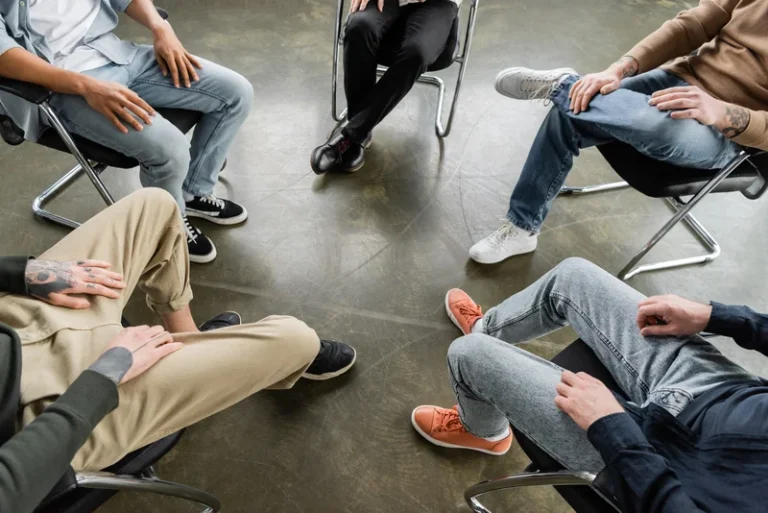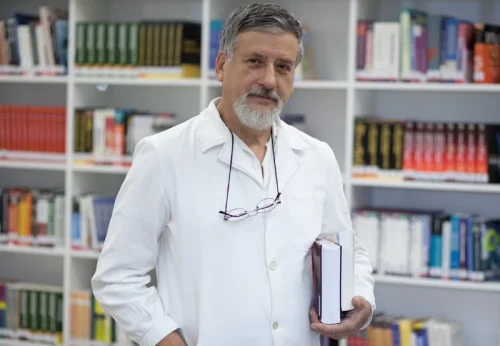
However, for many ketamine abusers, withdrawal isn’t a major issue, as ketamine doesn’t produce a clinically significant withdrawal syndrome. This minimizes the need for close medical supervision throughout the period of withdrawal—allowing those in recovery to move forward and focus on the second stage of their treatment. Researchers are https://sober-house.net/fda-drug-safety-communication-fda-review-finds/ investigating ketamine as a potential treatment for depression and suicidal ideation, with promising results. Currently, ketamine is not FDA-approved for treating any psychiatric disorder. A similar drug, the nasal spray Spravato (esketamine), is approved in combination with an oral antidepressant for treatment-resistant depression.
Albanese says decision to raise terror threat level does not imply ‘imminent threat’

The spray has a “black box” warning about the risk of sedation and trouble with attention, judgment, and thinking, as well as risk for abuse or misuse of the drug and suicidal thoughts and behaviors. “When enough stories like that started to pile up, doctors said, ‘Maybe there’s something here,’ ” says Stewart, an emergency physician and founder of Insight Ketamine in Santa Fe, NM. Like the drug itself, Stewart got his start in combat medicine during the Vietnam War.
- It is important to note that ketamine is no longer safe when individuals take it inappropriately.
- Each infusion visit was separated from any other infusion visit by 10–14 days to avoid drug carry-over effects.
- Spravato is a nasal spray that is used under strict medical supervision and is not used by patients at home.
ASIO lifts terror threat level to ‘probable’ amid heightened tensions over war in Gaza
The first feeling of the high that the user will get is an overwhelming feeling of relaxation, sometimes described as a full-body buzz. Some users feel like they’re floating and some even describe it as being out of their bodies. Many experience hallucinations that can last longer than the anesthetic effects. No person with alcohol abuse disorder or alcohol intoxication should take ketamine, even in doctor-prescribed doses, as it can cause death.
Assessments of dissociation and other ASCs
Other mechanisms of action exerted by ketamine may also contribute to this pain control. Ketamine is classified right in the middle of this scale at a Schedule III, meaning the DEA considers it to carry a moderate to low risk of dependence. Ketamine therapy works differently than other medications for depression.

On the other hand, ketamine has been reported to produce states experienced as aversive, such as hostility, fear, or horror related to paranoid thoughts, impairment in cognition, losing control, or gaps in memory (amnesia). Let’s examine the reverse translational implications of the current study’s results. This same research group previously found that ketamine induced an oscillatory rhythm in layer 5 neurons of the retrosplenial cortex (RSP), which is necessary for dissociation-like behavioral effects54. Although the researchers completed an unbiased pan-cortical assessment of the mouse brain to identify the neural origins of ketamine-induced dissociation, they were not able to fully assess deeper regions of the brain including the insula.
While taking an antidepressant or going to psychological counseling (psychotherapy) may work for most people, these standard treatments aren’t enough for others. Symptoms may not improve much or at all, or they may improve but keep coming back. “If the coroner found massive doses of ketamine in his system, similar to levels seen in anesthesia, it is highly likely that he ingested it in the few hours or less prior to his death at home, in a non-clinical setting,” Radowitz said. The laws and regulations that govern drug marketing and promotion are enforced by the overlapping authorities of the FDA and the Federal Trade Commission and a patchwork of state consumer protection statutes.
The antidepressant effects of ketamine wear off in hours, days, or a couple weeks in people who only get a single infusion. He was also talking in general, not specifically about the Perry case. But the actor’s case is a caution, he said, not to use more than is prescribed.
Further research on neuromodulation (TMS), ketamine, psychedelics, and GLP-1 receptor agonists may increase patient and physician interest in AUD treatment. The Company also announced preclinical data showing the effects of DLX-001 on antidepressant, structural, and functional plasticity assays. IV-infused ketamine is an FDA-approved anesthetic for surgical and medical procedures. In recent years, ketamine has increasingly been used as an antidepressant to treat TRD — considered off-label use. Ketamine delivered in low doses can provide rapid relief of TRD lasting for days to weeks. Usually, it’s given in decreasing frequency over several weeks, starting with two doses a week for 2 to 3 weeks, then once weekly, then once monthly and then hopefully tapering off.
The activity of amygdala, anterior insula, sgACC, and dACC in response to affective stimuli is the pertinent target for investigating the neural basis of ketamine-induced dissociative experiences such as depersonalization. There is emerging evidence that, relative to a non-placebo baseline condition, ketamine modulates anterior insula, amygdala, and ACC activity in response to facial emotion stimuli during BOLD fMRI26,27,28. Our focus on the affective circuit regions of interest also reflects their importance in psychiatric conditions now treated with ketamine, including depression and SUDs. Alterations in activity and connectivity of these negative circuit nodes are consistently observed in depression (for review, see ref. 24) and SUDs (for review, see ref. 29). Ketamine-induced dissociation can encompass a broad range of altered states that span the spectrum of aversive experiences, from relieving negative states to boosting positive feelings.
I certainly think clinicians and patients should be talking about these things. Thanks to an interesting loophole in the laws governing drug advertising, ketamine is now marketed for the management of any number of different psychiatric illnesses. Depression, anxiety, post-traumatic stress disorder, and chronic pain are the big ones, but it’s also being marketed for other uses, ranging from Lyme disease to alcoholism to opioid addiction. As is often the case, enthusiasm and marketing have gotten ahead of the evidence. Pediatric neurotoxicity Studies conducted in young animals and children suggest repeated or prolonged use of general anesthetic or sedation drugs in children younger than 3 years may have negative effects on their developing brains.
This medication has been used in many different ways over the years. In the past, there was speculation that ketamine masked depression by making a person feel “high.” This theory has since been debunked. Ketamine doesn’t remain in the system very long, yet research shows that people treated with it feel relief in the days and weeks after they stop taking it.
Esketamine (Spravato), one of the forms of racemic ketamine, was approved in 2019 for specific types of depression. Spravato is a nasal spray that is used under strict medical supervision and is not used by patients at home. Counseling and psychotherapy help you understand how and why you’re abusing ketamine. Whether you have https://sober-house.org/mdma-and-the-brain-is-ecstasy-neurotoxic/ depression or find it hard to de-stress, psychotherapy can help you address the central underlying reasons you take it. Counseling can help you to resist the lure of the high and find healthy ways to relax and enjoy yourself without turning to drug use. CBT (cognitive behavioral therapy) is particularly valuable for this.
Many clinical trials have barred people with substance use problems. Weeks, months, or years after their first series of six to eight doses, patients may return for https://sober-home.org/meth-addiction-symptoms-getting-help-detox/ a booster. There is no standard recommendation for when or if people need a booster. They discuss it with their doctor if symptoms of depression start to reappear.

 News3 days ago
News3 days ago
 india3 days ago
india3 days ago
 india2 days ago
india2 days ago
 india2 days ago
india2 days ago
 kerala2 days ago
kerala2 days ago
 kerala2 days ago
kerala2 days ago
 kerala2 days ago
kerala2 days ago
 kerala2 days ago
kerala2 days ago




